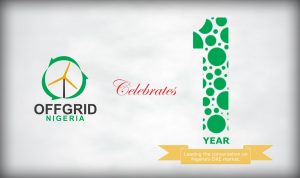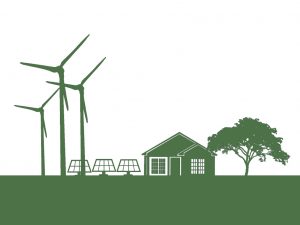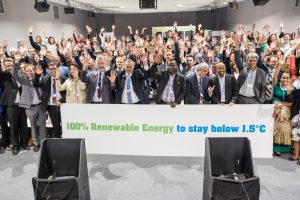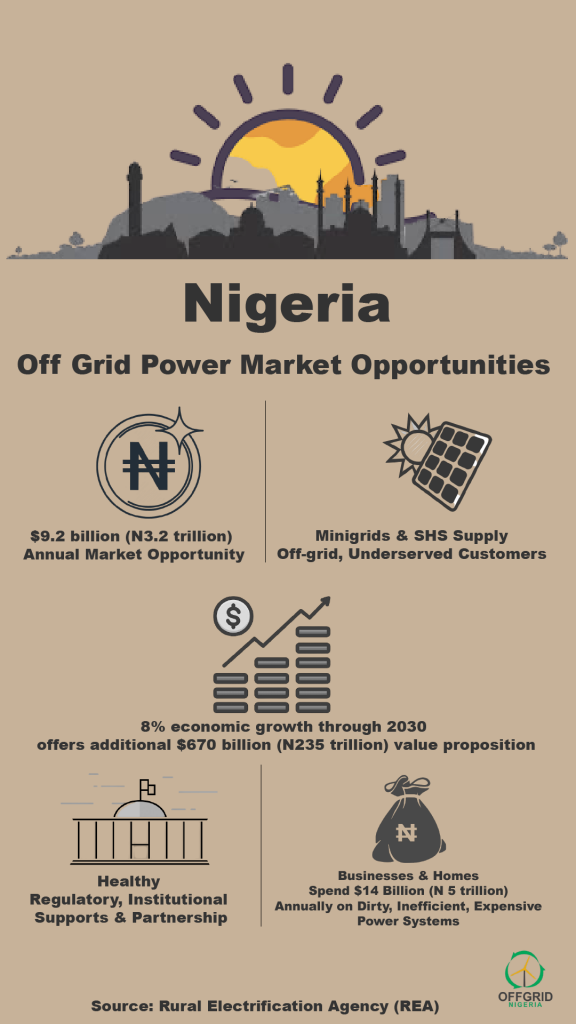Recently, the Managing Director of the Nigerian Bulk Electricity Trading (NBET), Marilyn Amobi, said that Nigeria’s plan to generate and distribute 20,000 megawatts (MW) of electricity by 2020 will not be feasible.
On the back of a poorly planned target, Amobi based her assertions, stating that there was no capacity upgrade to guarantee this would happen by then.
By her position, Amobi who superintends the ‘bulk trader’, an agency set up to bulk purchase electricity produced in the country through a framework of thought-through legal contractual agreements, is considered well-informed to tell of the status of a sector she works in.
And by implication, she has without doubt passed a vote of no confidence on the capacity of the sector. Sadly, she based her claims on the failings of the conventional fossil fuel power systems to lead Nigeria to this target without a thought on the immense capacity of renewable energy sources especially in this days of cheap project costs and technology reliability in the sector.
Reportedly speaking to a committee on power of the federal House of Representatives that visited to her agency in Abuja to assess their contributions to a stable electricity supply regime in Nigeria, Amobi explained that the realities on ground suggest that Nigerians may have to wait a little beyond 2020 to see the 20,000MW coming to reality.
She noted that the long wait was informed by the non-existent capacity in the sector to realise that mark, or better still no concrete plans towards that.
But representative of most Nigerian public official, Amobi was quick to add that the narrative can significantly shift if the current attention given to the sector is sustained, this was after her claims of a non-existent plan.
Despite her volte-face, we believe she had passed the message, which is: 20,000MW would be an illusion by 2020.
However, OGN believes that her spot-on assessment of the narratives in Nigeria’s power sector, especially the conventional fossil fuel power systems, provides an opportunity for the country to think afresh, amend her plans and mainstream off grid renewable power sources into her electricity mix.
As basic as it is defined in the business dictionary, planning which appears to be the missing ingredient in Nigeria’s public power supply system, is a basic management function involving the formulation of one or more detailed plans to achieve optimum balance of needs or demands with available resources.
A valuable planning process involves; (1) identifying the goals or objectives to be achieved, (2) formulating strategies to achieve them, (3) arranging or creating the means required to achieve them, and then (4) implementing, directing, and monitoring all steps in their proper sequence.
It is quite obvious Nigeria may have lost touch with some of the key steps in planning for her power sector.
Because the ‘devil is in the details’, we are of the view that a good, well-crafted paper-based document or statement of intent does not necessarily translate to a great and valuable outcome especially if poorly executed.
The EPSRA 2005 is a fantastic document, but its implementation has largely being on a hit-or-miss basis. For instance, why has it taken Nigeria this long to begin to think about renewable energy sources as an alternative? On this, OGN is bold to say that if the destruction of gas lines in the Niger Delta had not happened, perhaps, the talk about renewables by the government may not have happened as well.
Across the globe, and even in Africa, developments in renewable energy are daily taking new leaps. Kenya, Rwanda, and even neighburing Sierra Leone are making great headways in using their sun, wind and waste to expand access to electricity for their citizens.
Yet, Nigeria which has the sun in abundance, very good wind speed, plenty of water sources, and a lot of wastes generated from her big cities, continues to wait behind fossil fuel power generation that has repeatedly shown its unreliability.
We know that part of the 15,000MW potential hydro capacity which the Energy Commission of Nigeria said is inherent in-country, that small hydros can contribute 23 per cent (3,450MW).
Also, the National Renewable Energy Policy of 2015, estimates that 8,188.20MW of the country’s electricity could come from renewable energy sources – wind, solar, SHP, and biomass by 2020, now when that is added to the projected 12,000MW fossil fuel generation by 2020, the country could as well be hitting the 20,000MW.
Officials like Amobi will do the country a whole lot of good by recognising that the sector needs just a proper tiding up of its planning processes to make the kind of progress the country desperately needs.





